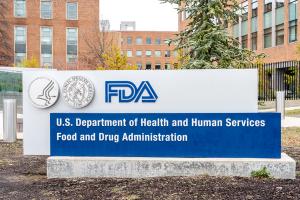|Articles|March 1, 2012
PDUFA Renewal Seeks Development Incentives
Congress, industry map out goals and concerns for revising FDA policies linked to user fee legislation.
Advertisement
The formal debate over the reauthorization of the Food and Drug Administration's user fee program began last month, as legislators raised pet issues at Congressional hearings and FDA officials responded to new and old regulatory proposals. Biomedical companies seek to moderate what they see as FDA's overly-cautious approach and excessive research requirements that stymie innovation. Yet, consumer advocates and some legislators continue to highlight drug safety problems and demand more extensive testing of new drugs.
Jill Wechsler
These issues are central to renewal of the Prescription Drug User Fee Act (PDUFA) for the fifth time since the program was established 20 years ago. Industry reached an understanding with FDA last year on revised review goals and fee levels, setting the stage for Congress to enact PDUFA V by mid-2012 ("View from Washington," Applied Clinical Trials, October 2011). While there's general agreement that the new plan accomplishes many desirable changes in the current regulatory system, a good deal of negotiating lies ahead.
At hearings before the House Energy & Commerce Health Subcommittee, Commissioner Margaret Hamburg made the case for renewing PDUFA and legislation to spur pediatric drug labeling; Janet Woodcock, Director of the Center for Drug Evaluation and Research, explained the importance of new fees for generic drugs and biosimilars; and Jeffrey Shuren, Director of the Center for Devices and Radiological Health, outlined the hard-fought agreement on the medical device user fee program: device makers agreed to pay almost $600 million over five years to support speedier review of device applications and important changes in agency oversight. The Senate Health, Education, Labor and Pensions Committee held a preliminary hearing on user fees last summer, and will address the specific fee plans this spring.
Safety and conflicts
The most likely addition to PDUFA is legislation enhancing FDA controls over the global drug supply chain, including stiffer import controls and more inspections of foreign manufacturers and clinical sites. Congress is expected to adopt some version of the drug safety legislation authored by Rep. John Dingell (D-MI), as both Democrats and Republicans want to boost inspections of foreign operators to level the playing field for US firms, and new user fees for generic drugs provide the necessary funding. The legislation also could require manufacturers to inform FDA earlier about situations likely to lead to drug shortages, and possibly authorize fast FDA review of applications seeking to bring short-supply medicines to market.
Another hot issue is whether to loosen conflict-of-interest (COI) requirements and raise caps on COI waivers to make it easier to appoint key experts to FDA advisory committees. Democrats and consumer groups object that permitting scientists with industry ties to serve on these important committees might undermine the panels' independence and impartiality.
Republicans and sponsors claim that the current rules are too stringent and delay approvals when advisory panels have trouble filling their slots. They have support from orphan drug advocates who agree that FDA should only have to meet the financial disclosure rules that apply to all other federal agencies and not face added restrictions, which are particularly troubling for specialized research fields with a limited number of key scientists. Diane Dorman, Vice President of the National Organization for Rare Disorders, told the House E&C panel that the current COI rules have created a system that is "out of balance" because "conflict avoidance," and not unique expertise, is the primary driver of who serves on advisory committees.
However, Hamburg said that the current COI policy is not a problem, that FDA is not "bumping up against our cap in terms of waivers," and that it doesn't need a "legislative fix." Those comments differ from Hamburg's testimony last year that the COI rules made it difficult to find sufficiently qualified individuals to serve on advisory committees. While sponsors acknowledge that dropping waiver caps won't make a big difference, they fear that current rules create a hostile environment for biomedical scientists working with FDA.
More drugs for children
The Best Pharmaceuticals for Children Act (BPCA) and the Pediatric Research Equity Act (PREA) are both up for five-year renewals as part of the PDUFA approval process and have strong support from health professionals, researchers, and pharma companies. However, numerous proposals have surfaced that could stymie the reauthorization process and undermine the incentives in the program for sponsors to conduct studies on drug safety and efficacy in children.
Industry opposes many of these changes, particularly any reduction in the extra six-months exclusivity or new penalties for failing to complete requested studies on schedule. Yet, there's support for providing FDA with additional tools for dealing with study delays. Under current policy, FDA's only "stick" to compel a sponsor to complete a requested study is to deem the product misbranded and pull it from the market, which no one wants to do. Authorizing civil monetary penalties seems a more effective way to improve compliance with pediatric study requests. At the same time, FDA officials acknowledge that there often are good reasons for pediatric studies to take longer than anticipated, and that the agency should be able to grant deferrals when warranted.
Another strategy for accelerating development of pediatric labeling is for sponsors to plan for studies in children earlier in the drug development process. The American Academy of Pediatrics wants pharma companies to submit proposed pediatric study plans at the end of Phase II, instead of waiting until application submission to outline study design, objectives, endpoints, and a timeline for completion. The pediatricians also want more studies to include neonates as well as older children. There's general agreement among researchers and sponsors that PREA requirements for pediatric studies should be made permanent, but the docs support the Democratic position that the exclusivity provisions authorized by the BPCA should continue to be re-evaluated every five years.
In addition to providing more information on therapies for children, legislators are rolling out numerous proposals to spur development of critical therapies, including antibiotics to combat drug resistance and therapies for rare conditions. For example, there's bipartisan backing in the Senate and House for the "Sprint Act" (Spending Reductions Through Innovations in Therapies); it would provide $50 million to fund public-private partnerships doing research on critical conditions, such as Alzheimer's disease. However, FDA and big pharma are leery of bills that would prevent FDA from seeking necessary clinical data to approve a new drug, an approach backed by smaller biotech firms and patient groups that want more certainty for developers and investors.
FDA's response is that several recent drug approval decisions illustrate that it can be flexible on setting data and study requirements for important experimental therapies. And the PDUFA V agreement includes a number of changes in FDA operations to facilitate new drug development. The new program provides additional funding to support the validation of biomarkers, broader use of patient-reported outcomes, and use of innovative clinical trial designs that promise to enhance clinical evaluation.
Inadequate disclosure of clinical trial results could be another thorny issue. Some Democrats want to expand required postings on the clinicaltrials.gov website to include data from registered trials for drugs that are never approved. The rationale is that important information can be gleaned from dropped trials, and it can help other researchers avoid similar mistakes. Sponsors, however, oppose mandating disclosure of often sketchy clinical results; FDA would like to keep out of this fight.
One issue that appears off the table is an overhaul of requirements for establishing risk evaluation and mitigation strategies (REMS). Pharma companies have complained that the proliferation of REMS delays new drug approvals, and providers find multiple REMS confusing and burdensome. FDA has responded by scaling back the program, as seen in guidance adopted last year that pulls MedGuides out of the REMS programs and greatly reduces the need for REMS assessments. As part of the PDUFA V agreement, FDA says it will work to standardize formats for those REMS deemed necessary and do more to measure the program's impact.
There could be heated debate about revising FDA's mission statement to emphasize the agency's important role in facilitating healthcare innovation and making new treatments available to patients. That's not so controversial, but FDA is unhappy with a proposal to highlight FDA's role in creating jobs and spurring economic growth. Hamburg noted at the E&C hearing that FDA would have trouble factoring jobs creation into decisions on new product approvals. "It will get very complicated and, frankly," she said, "I think it would be quite inappropriate."
Jill Wechsler is the Washington Editor of Applied Clinical Trials, (301) 656-4634 jwechsler@advanstar.com
Articles in this issue
over 13 years ago
Article
Alzheimer's Disease Presents Unique Problems in Volunteer Outreach and RetentionNewsletter
Stay current in clinical research with Applied Clinical Trials, providing expert insights, regulatory updates, and practical strategies for successful clinical trial design and execution.
Advertisement
Related Articles
 What Resilient Trial Design Means for Clinical Teams
What Resilient Trial Design Means for Clinical TeamsSeptember 2nd 2025
 FDA Expands Transparency With Daily Adverse Event Reporting
FDA Expands Transparency With Daily Adverse Event ReportingAugust 25th 2025
Advertisement
Advertisement
Trending on Applied Clinical Trials Online
1
Phase III BRUIN CLL-313 Trial Finds Jaypirca Extends Progression-Free Survival in Treatment-Naïve CLL/SLL
2
Latest NIMBLE Study Results Highlight Progress in gMG Research
3
Q&A: Strategies for Successful Global Clinical Trial Delivery
4
ACT Brief Episode 8: Expert Insights on the Future of Obesity Drug Trials
5





.png)



.png)



.png)
.png)
